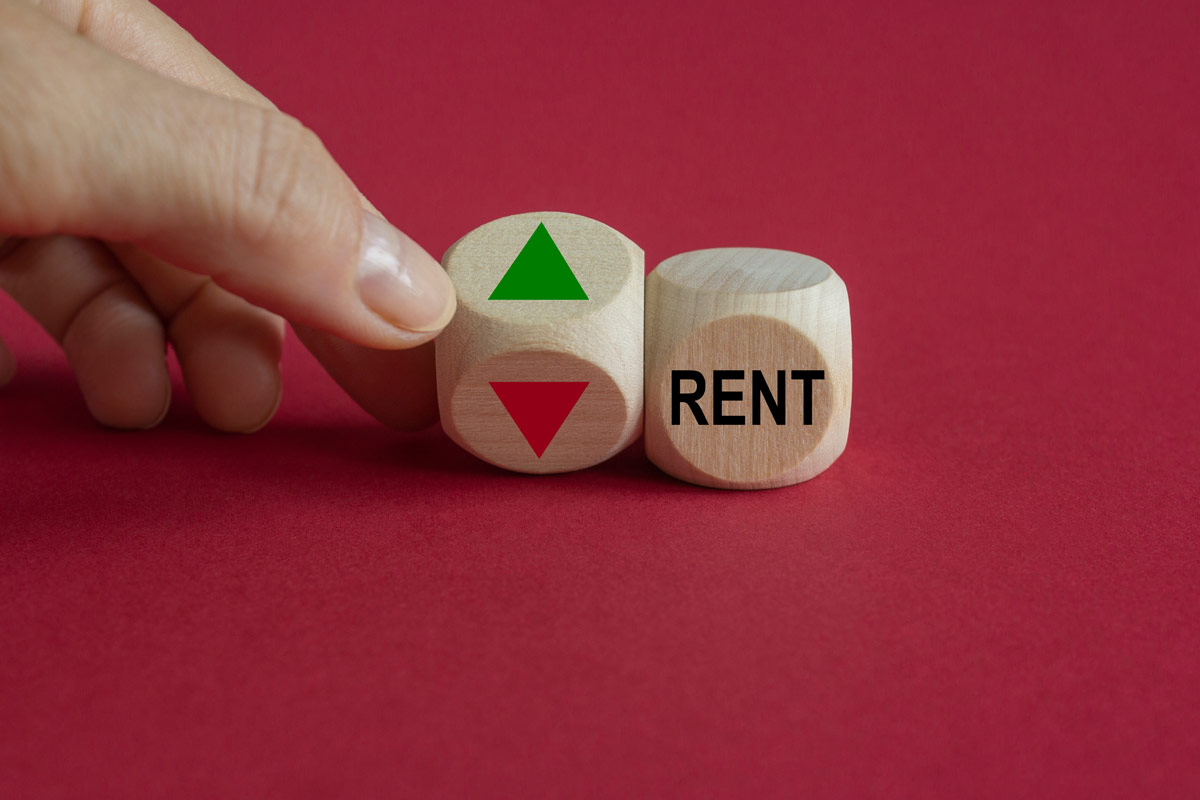Rent increases represent a necessary aspect of property management, enabling landlords to maintain profitability, cover rising operational costs, and align rental rates with prevailing market values. However, these increases can be a source of anxiety for tenants, potentially impacting their housing affordability. A balanced approach, grounded in legal compliance and transparent communication, is therefore paramount. This article aims to provide landlords with a comprehensive toolkit for navigating rent increases effectively and fairly. It will delve into the relevant legal frameworks, explore effective communication strategies, and outline best practices for implementing rent adjustments.
Understanding the Legal Landscape of Rent Increases
Provincial legislation across Canada dictates the permissible frequency and amount of rent increases, along with the required notice period. Adherence to these regulations is crucial for landlords to avoid legal challenges and maintain positive tenant relations.
- Provincial Rent Control Legislation: Most Canadian provinces have some form of rent control, limiting the amount by which landlords can increase rent annually. For instance, Ontario’s Residential Tenancies Act, 2006 sets out specific guidelines for rent increases, including a provincially determined guideline percentage. This percentage, often based on the Consumer Price Index, dictates the maximum allowable increase for most tenancies. Landlords must familiarize themselves with the specific regulations in their province.
- Allowable Frequency of Rent Increases: Provincial laws also specify how often landlords can raise the rent. In Ontario, for example, rent can only be increased once every 12 months. Similar regulations exist in other provinces, emphasizing the importance of tracking tenancy start dates and previous rent increase dates to ensure compliance. Ignoring these timeframes can render a rent increase notice invalid.
- Notice Requirements for Rent Increases: Landlords are legally obligated to provide tenants with written notice of a rent increase within a specified timeframe. The length of this notice period varies by province. In Ontario, the standard notice period is 90 days prior to the effective date of the increase. Failure to provide adequate notice can delay the implementation of the rent increase.
- Exemptions from Rent Control: Certain types of rental units may be exempt from rent control legislation. In Ontario, for example, units first occupied after November 15, 2018, are not subject to the provincial rent increase guideline. Landlords need to determine if their property falls under any exemptions, as this will affect their ability to raise rent. Understanding these exemptions is critical for accurate application of rent increase rules.
- Dispute Resolution Mechanisms: Tenants have recourse if they believe a rent increase is illegal or unfair. Provincial tenancy boards or tribunals, such as the Landlord and Tenant Board in Ontario, provide mechanisms for dispute resolution. Landlords should be aware of these processes and be prepared to justify their rent increases if challenged. Familiarity with these processes can help landlords navigate potential disputes effectively.
Crafting and Delivering the Rent Increase Notice
A well-crafted and properly delivered rent increase notice is essential for ensuring legal compliance and fostering positive tenant relations. The notice must contain specific information and be delivered according to provincial regulations.
- Essential Elements of a Legally Sound Notice: A rent increase notice must include specific details to be legally valid. This typically involves the current rent, the proposed new rent amount, the date the new rent will take effect, and a clear statement that the increase is in accordance with provincial legislation. Omitting any of these elements can render the notice invalid.
- Reference to Applicable Legislation: Including a reference to the specific section of the provincial tenancy act that permits the rent increase can enhance transparency and demonstrate compliance. For instance, citing the relevant section of Ontario’s Residential Tenancies Act, 2006 can reassure tenants that the increase is legally sound. This proactive approach can minimize tenant concerns.
- Clear Calculation of the Increase: Providing a clear calculation of the rent increase, especially if it involves a percentage increase based on the provincial guideline, can help tenants understand the rationale behind the new amount. Transparency in the calculation process builds trust and reduces potential misunderstandings.
- Landlord’s Contact Information: The notice should clearly state the landlord’s or property manager’s contact information, allowing tenants to ask questions or seek clarification. Open communication channels are crucial for addressing tenant concerns promptly and professionally.
- Permissible Methods of Delivery: Provincial laws often specify acceptable methods for delivering rent increase notices. These may include hand-delivering the notice to the tenant, sending it by registered mail, or, with the tenant’s consent, by email. Adhering to these prescribed methods ensures the notice is legally considered served.
- Maintaining Proof of Delivery: Landlords should retain proof that the rent increase notice was properly delivered. This could include a signed acknowledgment from the tenant if hand-delivered or the registered mail receipt. Such documentation can be crucial in the event of a dispute.
- Avoiding Ambiguity and Jargon: The language used in the rent increase notice should be clear, concise, and free of legal jargon. Simple and straightforward language ensures that tenants fully understand the information being conveyed.
Communicating Effectively with Tenants About Rent Increases

Open and proactive communication can significantly mitigate tenant concerns and foster a more positive landlord-tenant relationship during a rent increase. Explaining the rationale behind the increase and addressing tenant questions can help them understand the necessity of the adjustment.
- Proactive Communication: Where possible, landlords can consider informing tenants about potential rent increases before formally issuing the notice. This allows for an initial dialogue and can help soften the impact of the official notification. Early communication demonstrates consideration for the tenant’s situation.
- Explain the Rationale: Clearly articulate the reasons for the rent increase. This could include rising property taxes, increased insurance costs, necessary repairs and maintenance, or alignment with current market rates. Providing context can help tenants understand the landlord’s perspective.
- Highlight Property Improvements: If the rent increase is partly due to recent property improvements or upgrades, highlight these benefits for the tenant. This can help justify the increase by demonstrating added value.
- Offer to Discuss Concerns: Explicitly invite tenants to discuss any concerns or questions they may have regarding the rent increase. This shows a willingness to engage in dialogue and address their anxieties.
- Maintain a Professional Tone: All communication regarding the rent increase should be professional, respectful, and empathetic. Avoid accusatory or defensive language, even if tenants express dissatisfaction.
- Be Prepared to Answer Questions: Landlords should be prepared to answer a range of questions from tenants regarding the rent increase, including the legal basis for the increase and the calculation method. Having this information readily available demonstrates preparedness and transparency.
- Document All Communication: Keep a record of all communication with tenants regarding the rent increase, including dates, methods of communication, and the content of discussions. This documentation can be helpful in case of future disputes.
- Consider Offering Flexible Payment Options: In certain circumstances, landlords might consider offering temporary flexible payment options to tenants who are experiencing financial difficulties due to the rent increase. This can demonstrate empathy and help retain good tenants. However, any such arrangements should be documented clearly.
Determining a Fair and Justifiable Rent Increase
While legal guidelines dictate the maximum allowable increase, determining a fair and justifiable rent increase involves considering various factors beyond the legal limit. This approach can contribute to long-term tenant retention and positive landlord-tenant relations.
- Market Analysis: Conduct a thorough analysis of comparable rental properties in the area to understand prevailing market rates. This ensures that the proposed rent increase aligns with the current rental market. Resources like the Canada Mortgage and Housing Corporation (CMHC) provide valuable rental market data.
- Consider Property Value: The current market value of the property is a relevant factor in determining a fair rent. Increases can be justified to reflect the appreciating value of the asset.
- Operating Costs: Increases in operating costs, such as property taxes, insurance, utilities (if included in the rent), and maintenance expenses, can necessitate a rent adjustment to maintain profitability. Landlords should be prepared to explain how these costs have increased.
- Recent Improvements and Upgrades: Significant property improvements or upgrades that benefit the tenant can justify a rent increase, even if it exceeds the standard guideline in jurisdictions with rent control. However, these increases often require approval from the relevant tenancy board.
- Tenant History and Value: Consider the tenant’s history of timely rent payments and their overall contribution to the tenancy. Retaining a good tenant may be worth considering a smaller rent increase.
- Long-Term Financial Goals: Landlords should consider their long-term financial goals for the property when determining rent increases. Balancing immediate revenue needs with tenant retention is crucial for sustained profitability.
- Provincial Guidelines as a Maximum: Remember that provincial rent increase guidelines represent the maximum allowable increase. Landlords can choose to implement a smaller increase, which can be a strategic move to maintain positive tenant relations.
Best Practices for Implementing Rent Increases

Implementing rent increases effectively requires careful planning, clear communication, and adherence to legal requirements. Following best practices can help minimize tenant friction and ensure a smooth process.
- Start Planning Early: Begin planning for rent increases well in advance of the required notice period. This allows ample time for market research, cost analysis, and crafting the notice.
- Prioritize Legal Compliance: Ensure strict adherence to all provincial laws and regulations regarding rent increases, including notice periods, allowable amounts, and proper delivery methods.
- Communicate Transparently and Respectfully: Maintain open, honest, and respectful communication with tenants throughout the rent increase process. Transparency builds trust and can mitigate negative reactions.
- Offer Resources and Support: If tenants express financial hardship due to the rent increase, consider offering resources or support, such as information about tenant assistance programs.
- Be Prepared for Negotiation (Where Applicable): In some jurisdictions or circumstances, there might be room for negotiation with tenants regarding the rent increase. Be prepared to discuss and potentially compromise.
- Focus on Long-Term Tenant Relationships: Recognize that retaining good tenants is often more cost-effective than dealing with vacancies and tenant turnover. Consider the long-term impact of the rent increase on the tenant relationship.
Implementing rent increases is a necessary but sensitive aspect of property management. By understanding the legal framework, communicating effectively, and adhering to best practices, landlords can navigate this process fairly and professionally. A balanced approach that considers both the landlord’s financial needs and the tenant’s affordability concerns is essential for fostering positive landlord-tenant relationships and ensuring the long-term success of the rental property. For expert assistance in navigating rent increases and property management, contact Rest Easy Property Management at (343) 880-EASY (3279).

